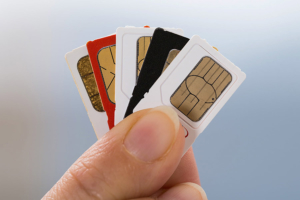A Guide to How Hackers Hack
You have surely heard of hackers, but do you really know how they work? Hackers are well known for being bad guys, though there are certainly good hackers out there too. Here’s a brief guide to help you understand how a hacker can hack:
 Directions for Hacking are Easy to Come By
Directions for Hacking are Easy to Come By
Hackers don’t have to look far for help, especially if they don’t know much about hacking. First is a well-known website known as Kali Linux. It has a ton of tools available for hackers, and the site features many links to other hacking resources. Of course, people who want to hack often go to YouTube, and there are more than 300,000 videos there that teach people how to hack. There are also thousands of other websites out there with easy to follow hacking instructions, and you can find them in about a minute.
Software is Easy to Find, too
Directions for hacking is one part of it, but there is also software available that makes the job of hacking quite easy. Here are some of the options available:
- Cain & Able – This tool helps a hacker intercept traffic on a network, and then can use that information to get passwords, which helps them get into accounts. More than 400,000 people have downloaded this software.
- Burp Suite – Hackers use this tool to map out the structure and pages of a website, and then they use the information to attack the site.
- John the Ripper – People use this tool for dictionary attacks. Basically, it takes text strings, encrypts them, and then uses the information for an attack.
- Angry IP Scanner – This is a free tool that allows the user to scan a network for open ports. Once they find one, they can easily gain access.
Hackers Also Use Hardware
In addition to downloading software for hacking, it’s also possible for hackers to use hardware. One is called Wi-Fi Pineapple, which is a small, portable object that the hacker can use with any hotspot. They use it to find a laptop that is searching for an access point. Once the Pineapple sees an open connection, the hacker can read texts, emails, and see what websites you are viewing.
Protect Yourself from Hacks
There are many things that you can do to protect yourself from hackers. First, make sure you are using an encrypted website, one with HTTPS instead of HTTP in the address. Also, consider using a VPN when browsing. This encrypts your data so a hacker cannot read it. There’s a ton more to do. Go here: https://safr.me/blog/
ROBERT SICILIANO CSP, is a #1 Best Selling Amazon author, CEO of CreditParent.com, the architect of the CSI Protection certification; a Cyber Social and Identity Protection security awareness training program.

 What is SIM Swapping?
What is SIM Swapping?
 This all sounds pretty dreary, but it’s not all bad. Research is showing that many industries in the US are making strides against these fake emails, though some are working harder than others.
This all sounds pretty dreary, but it’s not all bad. Research is showing that many industries in the US are making strides against these fake emails, though some are working harder than others.























